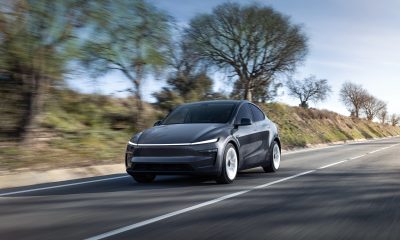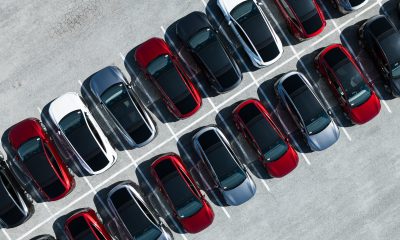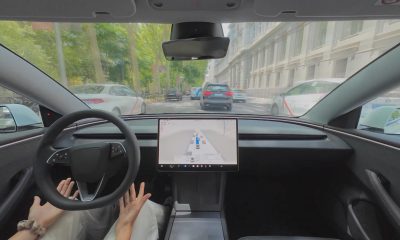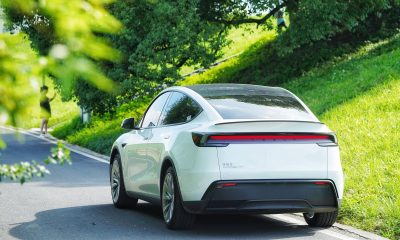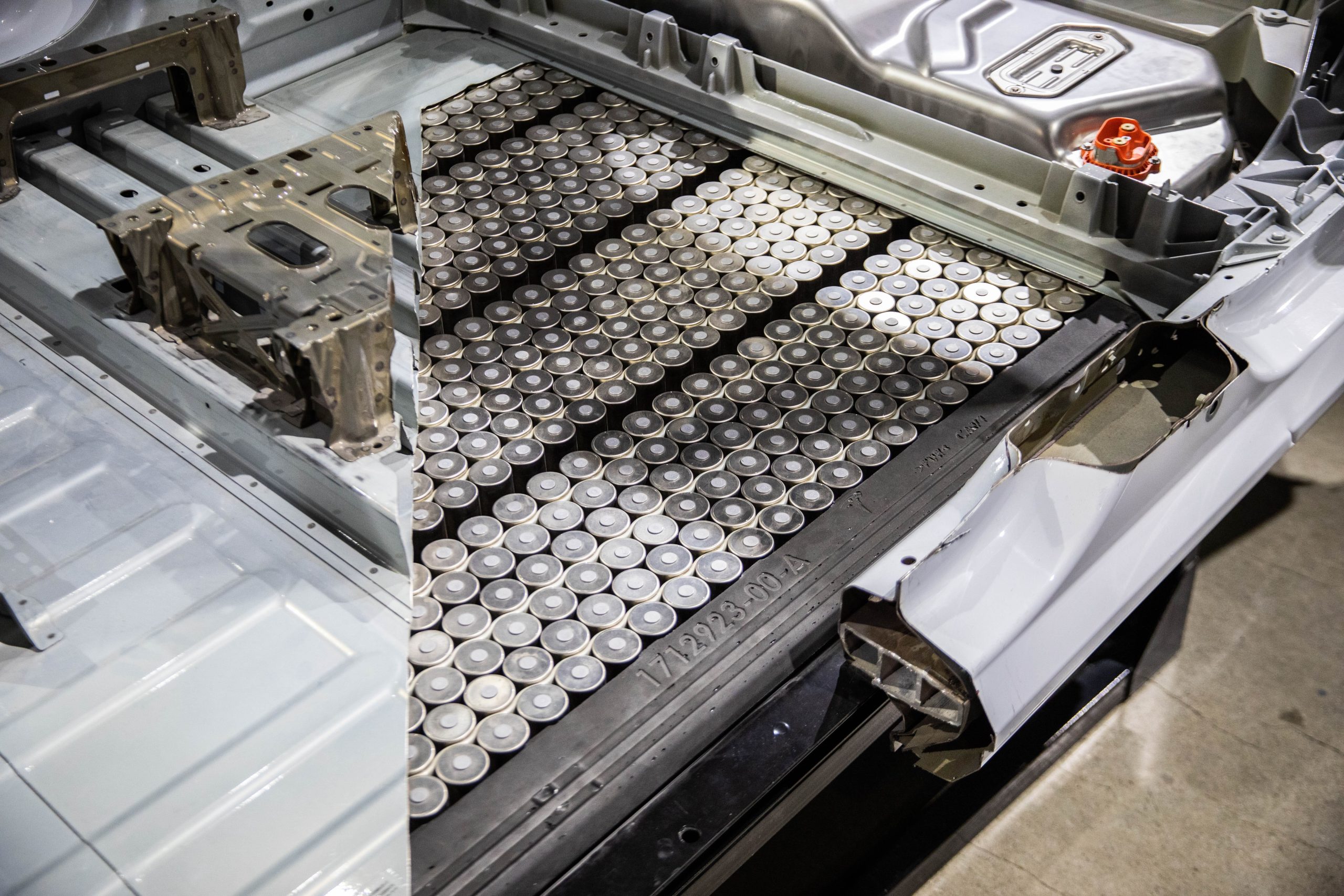

News
Tesla 4680 cells compared with BYD Blade and CATL Qilin structural batteries
The battle for the dominance of the electric vehicle sector would likely be determined by the market’s key battery makers. With this in mind, companies such as BYD, CATL, and Tesla — all of whom are exploring the structural battery form factor — have the chance to become the trailblazers of the next generation of electric car batteries.
During its Battery Day event, Tesla announced its 4680 cells, which are used alongside the company’s structural battery pack. BYD, on the other hand, has also released its Blade batteries, which also adopt a non-modular approach. CATL’s Qilin batteries are in the same segment, with its structural battery design.
Electric vehicle battery enthusiast Jordan Giesige of YouTube’s The Limiting Factor channel recently conducted a comparison of the advantages and disadvantages of Tesla, BYD, and CATL’s next-generation structural packs. Each battery pack was evaluated according to several factors, such as design, rigidity, packing and energy density, and safety, before being ranked. It should be noted that the figures used in the comparisons are drawn from estimates and materials released by Tesla, BYD, and CATL themselves, not current real-world observations.
As noted by Giesige, Tesla’s 4680 structural battery packs utilize hundreds of cylindrical cells with a cooling ribbon in between every other row of cells. A lid is then placed on top and polyurethane foam is injected into the pack. This polyurethane hardens, and the combination of the foam and the battery cells forms a rigid, honeycomb-type structure.
CATL Qilin batteries, which could be fitted with both nickel and iron-based cells, integrate thermal pads, the liquid cooling plate, and the cross bracing to create what could be described as structural cooling. The structural cooling is placed between each row of prismatic battery cells, and the cells themselves are placed into the pack directly without any modules. BYD Blade batteries use iron-based prismatic cells, though these cells are longer and thinner than those used by CATL. The cells are then stretched across the BYD Blade battery pack, allowing the cells themselves to replace conventional steel beams.
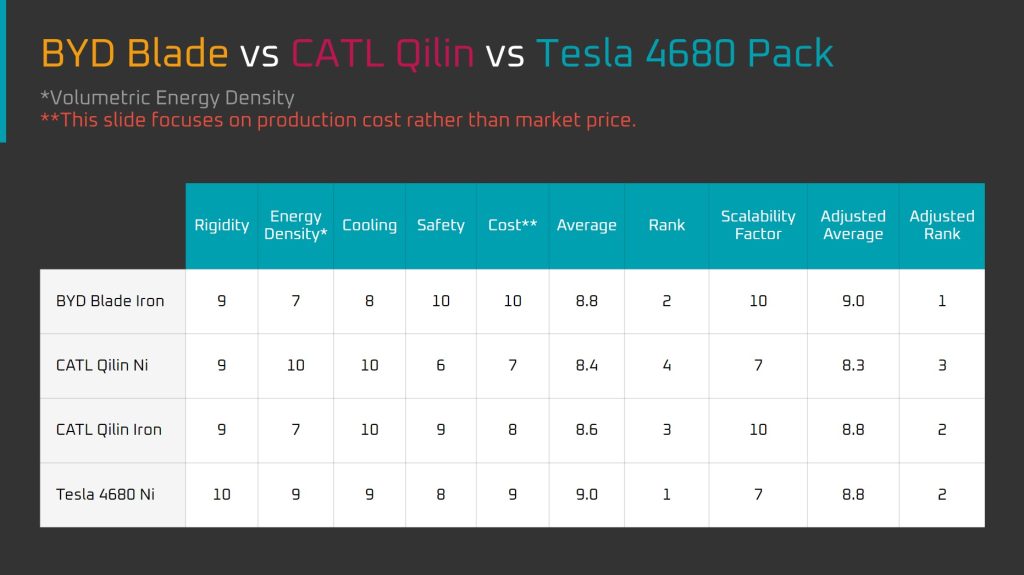
In the rankings of the next-generation batteries, the YouTube host noted that Tesla’s 4680 structural battery pack would likely be the most rigid among its peers. Tesla’s 4680 pack loses out in terms of packing density, however, as BYD and CATL’s use of prismatic cells maximizes volumetric energy density. With this in mind, and considering that CATL’s Qilin batteries can be fitted with high-energy density nickel-based cells, a nickel-based Qilin battery would likely be more energy dense than a nickel-based Tesla 4680 pack or a BYD Blade structural battery, which uses less energy dense iron-based cells.
As for cooling, Giesige noted that the BYD Blade batteries’ plate cooling would likely fall short of the Tesla 4680 pack and CATL Qilin battery’s cooling systems. In its marketing materials, CATL highlighted that cooling the sides of the Qilin battery increases the pack’s cooling area four times. Tesla’s 4680 battery also uses better cooling than BYD’s Blade batteries with its side cooling system, though it would likely not be as good as the cooling of CATL’s Qilin structural packs.
While BYD’s Blade batteries lose out in cooling, they are also likely the safest among its peers. This is because the BYD Blade battery uses iron-based cells, which have a higher decomposition and lower heat release temperature than the nickel-based cells used in Tesla’s 4680 cells and CATL’s nickel-based Qilin batteries. An iron-based Qilin battery comes second to the BYD Blade, partly due to its use of shorter and thicker prismatic cells, which may trap more heat.
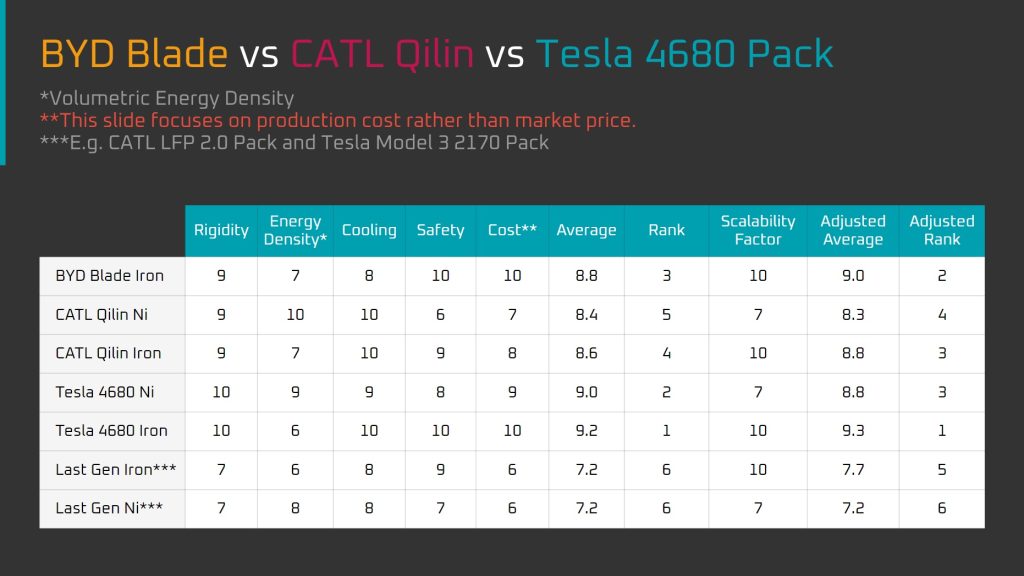
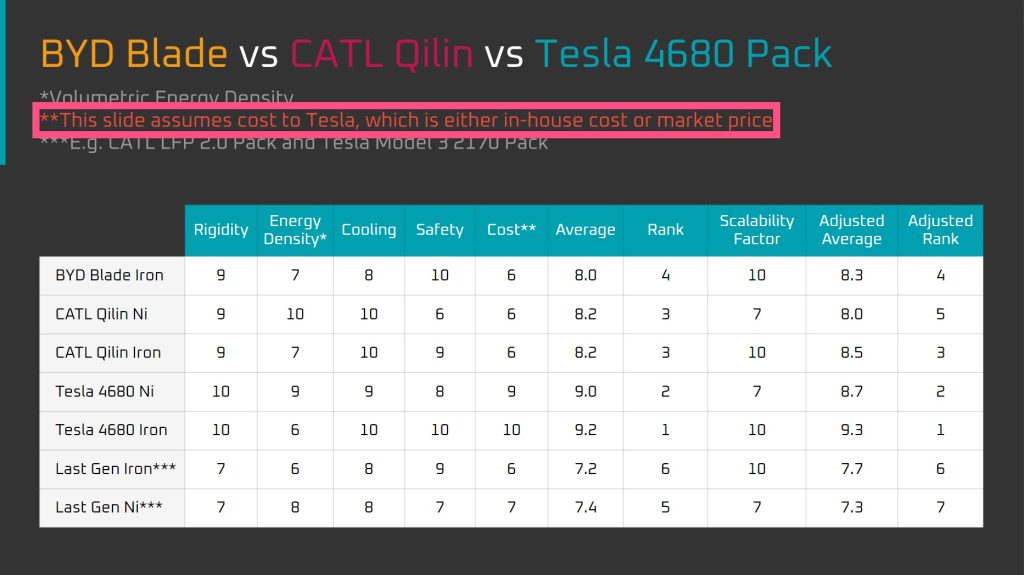
A Qilin pack with nickel-based cells was ranked last in terms of safety by the battery enthusiast, as Tesla’s 4680 pack with nickel-based cells features several safety systems, such as an overpressure mechanism on the bottom of the cells themselves. Since 4680 cells are also smaller than the prismatic cells used in the BYD Blade and CATL Qilin, they contain less energy. The 4680 cells themselves are enclosed in a thick shell as well, which are about 2-3 times thicker than a conventional battery.
Overall, Giesige noted that Tesla’s 4680 cells are likely the best all-rounder compared to its peers in the structural battery segment. The overall scores of the BYD Blade and CATL Qilin batteries bode well for Tesla’s future, however, as the companies could become suppliers of the EV maker in the future. CATL is already supplying Tesla with LFP batteries today, and BYD is heavily rumored to be a Tesla supplier as well. In a way, the analysis of the next-generation structural EV batteries shows that Tesla is not alone in pushing the battery industry forward.
Watch The Limiting Factor‘s full analysis in the video below.
Don’t hesitate to contact us with news tips. Just send a message to simon@teslarati.com to give us a heads up.
News
Tesla UK sales see 14% year-over-year rebound in June: SMMT data
The SMMT stated that Tesla sales grew 14% year-over-year to 7,719 units in June 2025.

Tesla’s sales in the United Kingdom rose in June, climbing 14% year-over-year to 7,719 units, as per data from the Society of Motor Manufacturers and Traders (SMMT). The spike in the company’s sales coincided with the first deliveries of the updated Model Y last month.
Model Y deliveries support Tesla’s UK recovery
Tesla’s June performance marked one of its strongest months in the UK so far this year, with new Model Y deliveries contributing significantly to the company’s momentum.
While the SMMT listed Tesla with 7,719 deliveries in June, independent data from New AutoMotive suggested that the electric vehicle maker registered 7,891 units during the month instead. However, year-to-date figures for Tesla remain 2% down compared to 2024, as per a report from Reuters.
While Tesla made a strong showing in June, rivals are also growing. Chinese automaker BYD saw UK sales rise nearly fourfold to 2,498 units, while Ford posted the highest EV growth among major automakers, with a more than fourfold increase in the first half of 2025.
Overall, the UK’s battery electric vehicle (BEV) demand surged 39% to to 47,354 units last month, helping push total new car sales in the UK to 191,316 units, up 6.7% from the same period in 2024.
EV adoption accelerates, but concerns linger
June marked the best month for UK car sales since 2019, though the SMMT cautioned that growth in the electric vehicle sector remains heavily dependent on discounting and support programs. Still, one in four new vehicle buyers in June chose a battery electric vehicle.
SMMT Chief Executive Mike Hawes noted that despite strong BEV demand, sales levels are still below regulatory targets. “Further growth in sales, and the sector will rely on increased and improved charging facilities to boost mainstream electric vehicle adoption,” Hawes stated.
Also taking effect this week was a new US-UK trade deal, which lowers tariffs on UK car exports to the United States from 27.5% to 10%. The agreement could benefit UK-based EV producers aiming to expand across the country.
News
Tesla Model 3 ranks as the safest new car in Europe for 2025, per Euro NCAP tests
Despite being on the market longer than many of its rivals, the Tesla Model 3 continues to set the bar for vehicle safety.
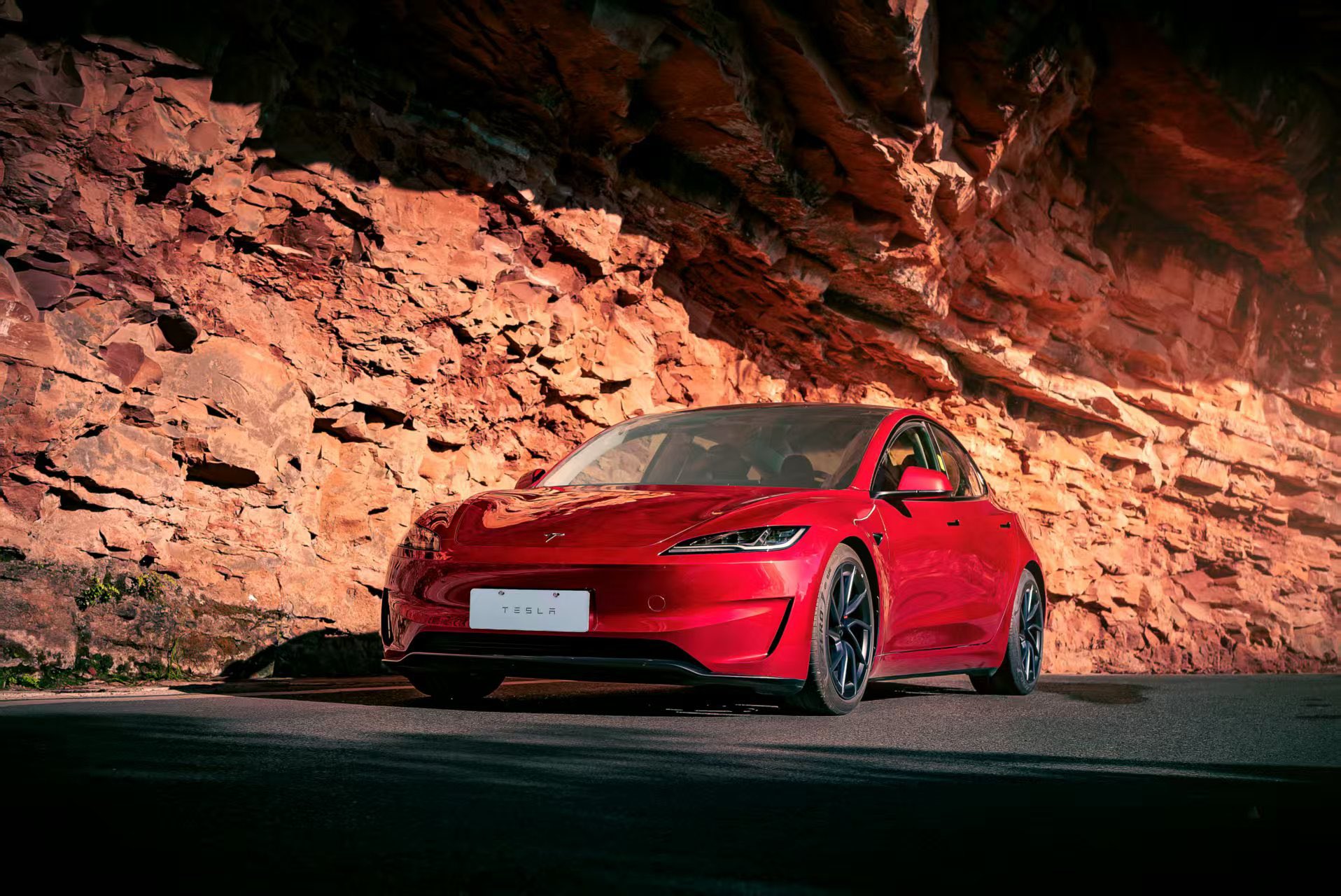
The Tesla Model 3 has been named the safest new car on sale in 2025, according to the latest results from the Euro NCAP. Among 20 newly tested vehicles, the Model 3 emerged at the top of the list, scoring an impressive 359 out of 400 possible points across all major safety categories.
Tesla Model 3’s safety systems
Despite being on the market longer than many of its rivals, the Tesla Model 3 continues to set the bar for vehicle safety. Under Euro NCAP’s stricter 2025 testing protocols, the electric sedan earned 90% for adult occupant protection, 93% for child occupant protection, 89% for pedestrian protection, and 87% for its Safety Assist systems.
The updated Model 3 received particular praise for its advanced driver assistance features, including Tesla’s autonomous emergency braking (AEB) system, which performed well across various test scenarios. Its Intelligent Speed Assistance and child presence detection system were cited as noteworthy features as well, as per a WhatCar report.
Other notable safety features include the Model 3’s pedestrian-friendly pop-up hood and robust crash protection for both front and side collisions. Euro NCAP also highlighted the Model 3’s ability to detect vulnerable road users during complex maneuvers, such as turning across oncoming traffic.
Euro NCAP’s Autopilot caution
While the Model 3’s safety scores were impressive across the board, Euro NCAP did raise concerns about driver expectations of Tesla’s Autopilot system. The organization warned that some owners may overestimate the system’s capabilities, potentially leading to misuse or inattention behind the wheel. Even so, the Model 3 remained the highest-scoring vehicle tested under Euro NCAP’s updated criteria this year.
The Euro NCAP’s concerns are also quite interesting because Tesla’s Full Self-Driving (FSD) Supervised, which is arguably the company’s most robust safety suite, is not allowed for public rollout in Europe yet. FSD Supervised would allow the Model 3 to navigate inner city streets with only minimal human supervision.
Other top scorers included the Volkswagen ID.7, Polestar 3, and Geely EX5, but none matched the Model 3’s total score or consistency across categories. A total of 14 out of 20 newly tested cars earned five stars, while several models, including the Kia EV3, MG ZS, and Renault 5, fell short of the top rating.
Elon Musk
Why Tesla’s Q3 could be one of its biggest quarters in history
Tesla could stand to benefit from the removal of the $7,500 EV tax credit at the end of Q3.

Tesla has gotten off to a slow start in 2025, as the first half of the year has not been one to remember from a delivery perspective.
However, Q3 could end up being one of the best the company has had in history, with the United States potentially being a major contributor to what might reverse a slow start to the year.
Earlier today, the United States’ House of Representatives officially passed President Trump’s “Big Beautiful Bill,” after it made its way through the Senate earlier this week. The bill will head to President Trump, as he looks to sign it before his July 4 deadline.
The Bill will effectively bring closure to the $7,500 EV tax credit, which will end on September 30, 2025. This means, over the next three months in the United States, those who are looking to buy an EV will have their last chance to take advantage of the credit. EVs will then be, for most people, $7,500 more expensive, in essence.
The tax credit is available to any single filer who makes under $150,000 per year, $225,000 a year to a head of household, and $300,000 to couples filing jointly.
Ending the tax credit was expected with the Trump administration, as his policies have leaned significantly toward reliance on fossil fuels, ending what he calls an “EV mandate.” He has used this phrase several times in disagreements with Tesla CEO Elon Musk.
Nevertheless, those who have been on the fence about buying a Tesla, or any EV, for that matter, will have some decisions to make in the next three months. While all companies will stand to benefit from this time crunch, Tesla could be the true winner because of its sheer volume.
If things are done correctly, meaning if Tesla can also offer incentives like 0% APR, special pricing on leasing or financing, or other advantages (like free Red, White, and Blue for a short period of time in celebration of Independence Day), it could see some real volume in sales this quarter.
You can now buy a Tesla in Red, White, and Blue for free until July 14 https://t.co/iAwhaRFOH0
— TESLARATI (@Teslarati) July 3, 2025
Tesla is just a shade under 721,000 deliveries for the year, so it’s on pace for roughly 1.4 million for 2025. This would be a decrease from the 1.8 million cars it delivered in each of the last two years. Traditionally, the second half of the year has produced Tesla’s strongest quarters. Its top three quarters in terms of deliveries are Q4 2024 with 495,570 vehicles, Q4 2023 with 484,507 vehicles, and Q3 2024 with 462,890 vehicles.
-

 Elon Musk4 days ago
Elon Musk4 days agoTesla investors will be shocked by Jim Cramer’s latest assessment
-

 News1 week ago
News1 week agoTesla Robotaxi’s biggest challenge seems to be this one thing
-

 Elon Musk2 weeks ago
Elon Musk2 weeks agoFirst Look at Tesla’s Robotaxi App: features, design, and more
-

 News2 weeks ago
News2 weeks agoSpaceX and Elon Musk share insights on Starship Ship 36’s RUD
-

 News2 weeks ago
News2 weeks agoWatch Tesla’s first driverless public Robotaxi rides in Texas
-
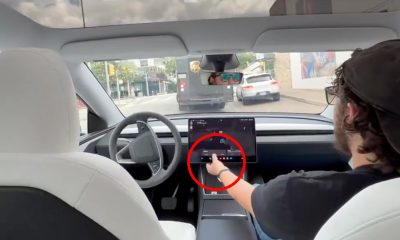
 News1 week ago
News1 week agoWatch the first true Tesla Robotaxi intervention by safety monitor
-

 News2 weeks ago
News2 weeks agoTesla has started rolling out initial round of Robotaxi invites
-

 Elon Musk2 weeks ago
Elon Musk2 weeks agoTesla to launch in India in July with vehicles already arriving: report


